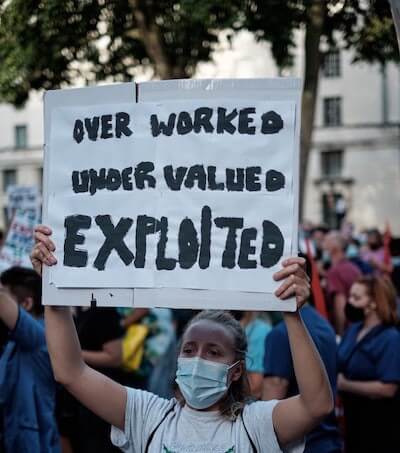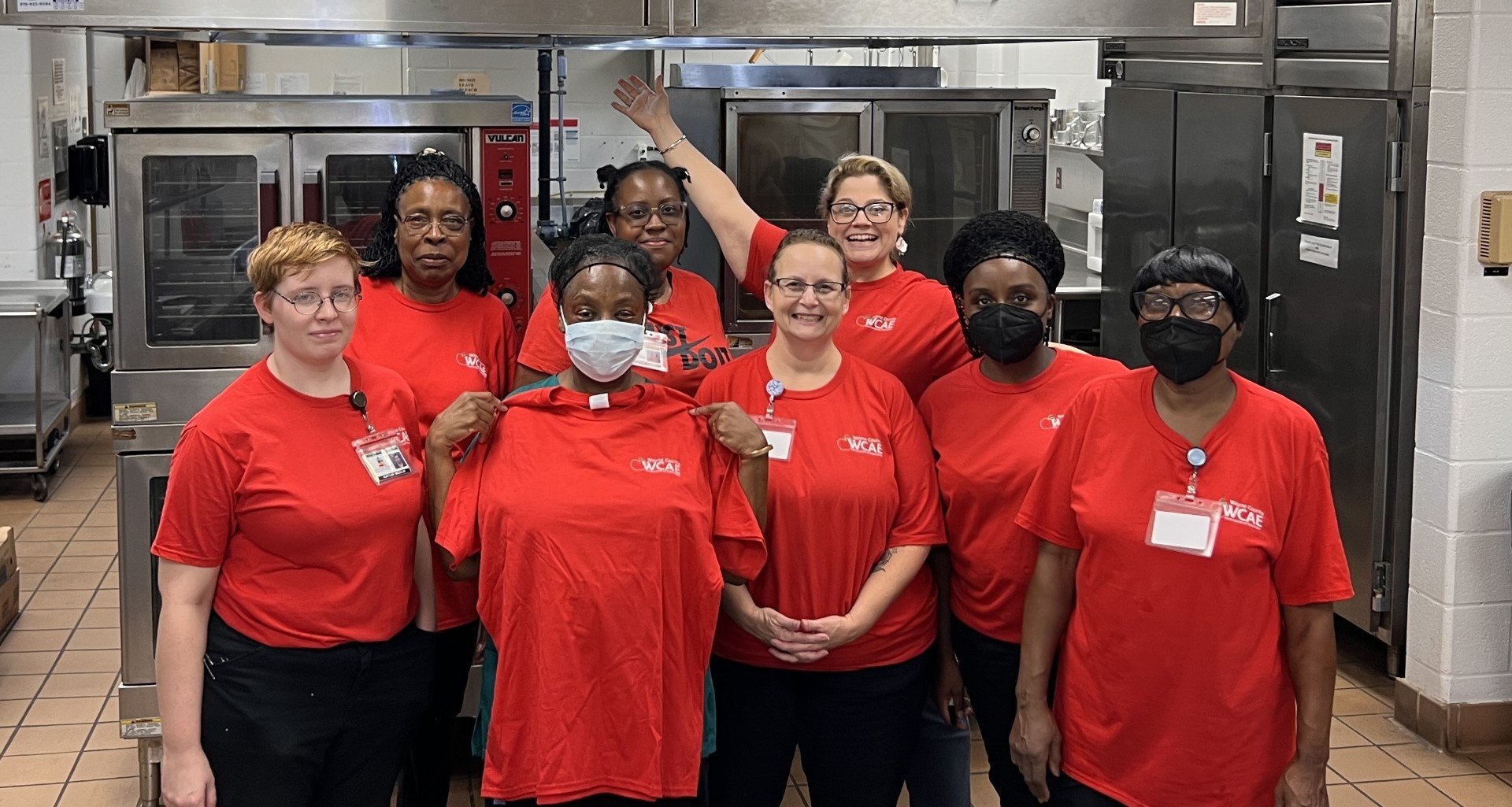The quality of life for working people in America has been in sharp decline for years, and now the situation is untenable. The vast majority of people are caught in a chokehold between rising costs and stagnant wages. We need new innovations on a much larger scale if we want to turn the tide back in workers’ favor.
Corporations certainly aren’t going to do it for us. Amidst a “labor shortage” caused in part by the pandemic-related deaths of nearly 1 million Americans, employers are wringing their hands about what they perceive as people’s unwillingness to work. Although average wages have made marginal gains, analysts say it’s not enough to restore workers’ unrealized earnings from years of depressed wages. We have certainly not seen a shift in employers’ willingness to compensate with things like health insurance, strong safety measures, and guaranteed paid time off.

Union density actually increased briefly during the pandemic, owing to the fact that laid-off workers were mostly non-union. Nonetheless, density in all sectors is at its lowest ever, and industries are adding new jobs at a rate that outstrips new union organizing efforts by an order of magnitude or more. In February of this year alone, total non-farm payroll employment increased by 678,000 new jobs. Our ability to organize new workers is nowhere near that scale.
But — it could be. There are encouraging signs that this might be a seminal moment for new organizing. Workers have, in huge numbers, woken up to the value of their labor — hence their unwillingness to return to pre-pandemic jobs with criminally low wages and no benefits. Working people with union representation across industries are striking for wage increases at rates we haven’t seen in decades. Take for example school employees in Minnesota, some of whom live out of their cars while working full time. Another key indicator of note is unemployment, which has rebounded to 2019 levels. Low unemployment means a worker-friendly job market: people can be choosy, while employers scramble to offer competitive packages. We can reasonably assume that scabs aren’t plentiful on the ground. If workers choose this moment to press for better wages and conditions at scale — such as what we’re seeing with Starbucks employees around the country — employers won’t have any place to run.
If we’re clever, and willing to experiment with new ways of organizing, we can seize this moment. To do so, we have to operate on a level that aggregates bargaining unit data and analyzes it on a massive scale, unheard of in traditional organizing. That’s where Machine Learning comes in. This is the science of algorithms that grow increasingly effective with experience, and its applications for organizing are tremendously exciting. TCW Strategies, for example, has developed Machine Learning tools to help unions and progressive organizations answer critical questions, such as, who is likely to become a member of our organization when asked? Or perhaps even more crucially, who has the potential to develop into an activist? Machine Learning technology has been available to wealthy for-profit outfits for several years; now, it’s accessible to organizations that fight for working people.
And it’s at its most powerful when coupled with one of our major advantages: data.
Unions and progressive organizations already have and generate powerful data about the people in their target universes. Harnessing that data could put us on a fast track to broadening our new organizing efforts. Let’s look at unions in southern states, for instance: while union density there has historically been the lowest due to state-level union suppression tactics, public sector unions have access to lists of all union-eligible workers, regardless of membership status. Progressive groups like Sierra Club and MoveOn.org have colossal mailing lists with reams of historical data about donations, petitions, and other shows of interest. With Machine Learning, those lists can be refined, enhanced, and overlaid with dynamic campaign engagements. The predictive power of these tools is considerable. Certainly this could mean a rapid increase in membership density for progressive organizations of all stripes — but it also puts large-scale, real-time collective action across bargaining units and state lines within our reach.
Let’s return to Starbucks for a moment. While it’s early still, workers there have won six of their seven elections by wide margins, and over a hundred more elections are scheduled in the coming months. That’s in spite of the corporation’s heavy-handed union busting tactics, which include pushing out their CEO and bringing back founder Howard Schulz to handle the organizing wave.
Starbucks is not the first corporation to face coordinated national union drives. Numerous attempts have been made to organize nationwide retailers. We see examples of this in campaigns like United For Respect at Walmart and the ongoing push to organize Amazon warehouses. Efforts like these and others have adopted and utilized digital organizing strategies, and they have produced some material gains in wages, but so far haven’t gone the distance as far as cementing power for working people. We need to take technology-driven organizing to the next level.
The democratization of Machine Learning means we can organize workers at a scale consistent with the growth of industry. It will take courage and investment on the part of union leaders and campaign directors across organizations and sectors to seize this moment — but seize it we must, or we risk being left behind for good. It’s time to put workers back in the driver’s seat of our economy. Machine Learning is one promising road we can take to get there.



